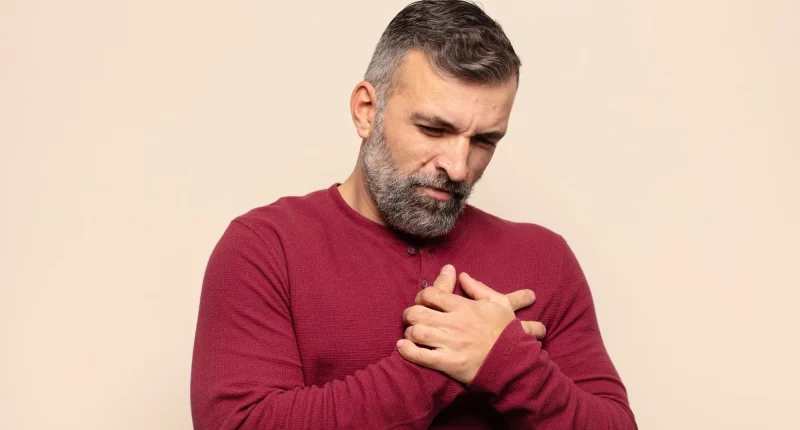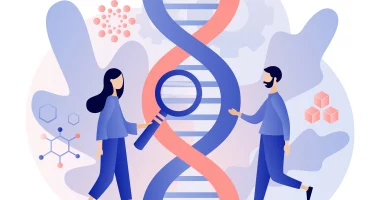An AVM (Arteriovenous Malformation) is a twist of blood vessels that causes abnormal blood flow between veins and arteries. While AVMs most commonly happen in the spinal cord or brain, they can develop in any area of the body.
Arteries are responsible for carrying oxygen-rich blood from the heart to various parts of the body. Veins carry low-oxygen blood back to the heart. Typically, tiny blood vessels called capillaries connect the veins and arteries, allowing for the exchange of oxygen and nutrients with body tissues. In an AVM, however, blood flows directly from the arteries into the veins without flowing through the capillaries.
This short way results in the nearby cells and tissues do not receive enough oxygen from the capillaries. As a result, these cells can become damaged or die due to the lack of oxygen.
The increased blood flow through the AVM can also cause hypertension and weaken the walls of the blood vessels. This can lead to several problems:
- An aneurysm is a swell in the blood vessel wall that can burst.
- Micro bleeding is small quantities of bleeding that can lead to dementia.
- Massive bleeding may lead to stroke.
Brain AVMs are rare, 1 out of 100 people are affected. They are more common in males.
Symptoms
Symptoms of an AVM can vary, and some people may not have any symptoms at all. However, about half of those with an AVM experience bleeding as the first symptom.
Around 12% of the population with an AVM have signs that can range from mild to severe. These symptoms may include:
- New onset seizures
- Headaches
- Weakness
- Muscle paralysis
- Visual disturbances
- Lack of coordination
- Language problems
- Facing difficulties in performing organizational works
- Abnormal sensations, such as numbness, tingling, or immediate pain
- Dementia
- Memory problems
- Confusion
- Hallucinations
Causes and Risk Factors
The causes of AVMs are not fully understood by scientists. It’s thought that AVMs might start to form when a baby is growing in the womb.
Before and after a baby is born, the body makes chemicals called angiogenic factors. These chemicals help to make new blood vessels. Scientists have seen differences in these chemicals in some individuals with AVMs. But they’re not sure how these differences make the blood vessels not form properly.
Sometimes, traumas to the brain or spine can also lead to AVMs. There are also rare conditions that run in families that can make someone more likely to have an AVM. For instance, these conditions are Wyburn-Mason syndrome and hemorrhagic telangiectasia.
Diagnosis
Diagnosing an AVM involves different methods.
First, doctors might listen to the body with a stethoscope to hear a special sound called a bruit. This sound is like a whooshing noise and happens because of the fast flow of blood in the AVM.
Next, doctors use special pictures of the inside of the body to see if there’s an AVM. One of the best ways to do this is with a test called cerebral angiography. This test gives clear images of the blood vessels in the AVM.
Sometimes, doctors might need to use other tests too, such as:
- CT scan: This shows if there’s any bleeding in the brain.
- MRI scan: This helps to see if there are any small changes in the brain.
- Transcranial Doppler ultrasound: This test can find medium to large AVMs by detecting bleeding.
- Magnetic resonance angiography: This test measures how fast and in what direction blood is flowing in the AVM. It also shows how the fluid around the brain and spine moves.
Treatment
Treating an AVM depends on where it is and how likely it is to cause problems like bleeding.
For AVMs in the brain, the main goal is to prevent bleeding. Sometimes, treatment also aims to control seizures or stabilize any neurological problems caused by the AVM.
Medicines can help with symptoms like headaches or seizures. But to prevent the AVM from leading more issues, doctors may need to destroy it or block blood flow to it. They can do this in a few ways:
- Surgery: This involves removing the AVM, usually if it’s small and near the surface.
- Embolization: Here, a doctor blocks the blood vessels in the AVM by creating a clot inside it. This doesn’t destroy the AVM but reduces blood flow.
- Radiosurgery: This treatment targets the AVM with radiation, damaging its blood vessel walls. Over time, the blood vessels shrink and close off.
Sometimes, if the AVM is hard to treat, doctors might only use medicines to manage symptoms and not try to get rid of the AVM itself.
Complications
When someone has an AVM, one of the biggest problems is bleeding. If there’s an AVM present in the brain, there’s a small chance every year that it could bleed, about 1-3%.
If it does bleed, it can cause serious damage to the brain. About 20-30% of the time, the person might have permanent problems because of the bleeding. And sadly, there’s a chance of dying from the bleeding, which is around 10-15%.
There can be other issues too, like swelling or shrinkage of the area around the AVM.
When to consult a doctor
It’s important to know when to consult a doctor for help. If you or someone else suddenly has any of these symptoms, it’s crucial to seek medical attention right away:
These are all symptoms that could indicate a serious health issue and should prompt someone to seek immediate medical attention. Symptoms like a acute headache, weakness in legs or arms, balance problems, memory and attention problems, seizures, or vision problems could be signs of various conditions, including neurological disorders or vascular problems. It’s essential to take these symptoms seriously and consult a healthcare professional promptly for proper evaluation and treatment.
These signs could indicate a serious health issue that needs immediate attention from a medical professional. Don’t hesitate to reach out for help if you notice any of these symptoms.
Living with an AVM
Living with an AVM can be a daunting experience, especially for those experiencing symptoms, as it can significantly affect their daily life and well-being.
However, there are steps individuals can take to manage their physical and mental health:
Firstly, it’s important to be cautious with physical activity. Those taking treatment for their AVM may require to avoid heavy exercises that could increase their blood pressure. Consulting with a doctor can provide guidance on which activities to avoid.
Additionally, individuals with an AVM should steer clear of certain medications that could heighten the chance of bleeding, like blood thinners.
Understanding the nature of AVMs and their potential effects can be allowed. It equips individuals with a realistic understanding of the risks associated with their condition, aiding in discussions with healthcare providers and others.
Looking for support is crucial. Talking with a therapist or counselor about the diagnosis can provide emotional support and coping strategies. Joining a support group, like the AVM Survivors Network, can also offer a sense of community and shared experiences.
Summary
An AVM is when blood vessels get tangled up, causing blood to move from arteries to veins without going through capillaries. This can mean less oxygen for cells, high blood pressure, and bleeding.
Doctors might use imaging scans like cerebral angiography to be sure about the diagnosis. This scan gives a clear picture of the AVM’s blood vessels.
Treatment could involve taking medicine for symptoms, but the best options are focused radiation or surgery to stop bleeding.
External links








